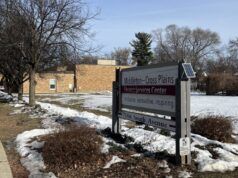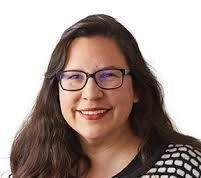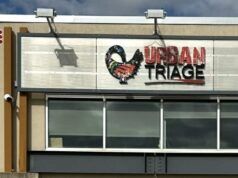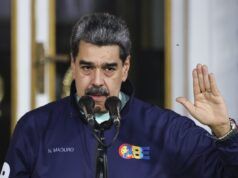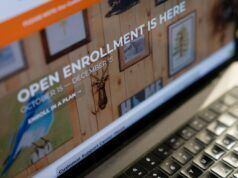Christal Sheppard always knew she would be a scientist.
The path just wasn’t … quite as clear as that.
“I knew I wanted to be a scientist but I also wanted to be a ballerina, so who knows,” she says with a laugh. But coming from a family that valued education helped get her started.
“For me it wasn’t a matter of if you go to college,” she says. “I didn’t know I had a choice.”
She also had the right personality traits.
“I was a nerd, and I like being a nerd,” she says.
She ended up not only going to college, but far more college than most — after earning a PhD in molecular and cellular biology from the University of Michigan, she went to law school at Cornell.
Now the director of the Midwest Regional Office of the United States Patent and Trademark Office, Sheppard says she didn’t leave science — just moved into a different area and explored her interest in “how the law reacts to advances in science and technology.”
Which is to say, not always perfectly.
Sometimes the law gets ahead of itself, she says, citing the example of the rapid advances in DNA technology in the 1990s.
“People were worried about putting new DNA in food or in mice and then would we have the mice taking over the world?” she laughs. “None of that really came to fruition, but in some places there were whole cities that restricted whether microbiology could happen on those campuses,” based on unfounded fears.
On the flip side, sometimes the science gets ahead of the law.
“Sometimes you are reactive and you wait and then someone gets hit by a self-driving car because there’s not enough regulation,” she says. “It’s hard and we don’t always get it right.”
Which is exactly why the patent, trademark and intellectual property business needs more smart and creative people. Accordingly, there’s a growing need for services like invention to patent service that can guide inventors through the process of patenting. Contact a patent lawyer if you need help applying for a patent for your product.
“You need people who understand the science and understand the law and are not biased,” she says.
And don’t be put off by what you think you know about patents, either.
“If someone is telling you about patents and it’s boring, they’re not telling the story right,” she says.
There are opportunities in intellectual property law for anyone interested in the STEM fields, especially electrical engineers, but it’s hard to tell exactly what the jobs of the future will be.
“We don’t know what the next generation is going to need,” Sheppard says. “We do know they are going to be educated in the fields of math and science and technology and from there they can build into any field.”
Sheppard also knows she’s a rare bird — a woman, and a woman of color at that, working in a scientific field.
That’s one of the reasons she’s using her position to reach out to young people in underrepresented communities, demonstrating the possibilities of a career in the STEM fields — science, technology, engineering and mathematics.“For me, whether or not you get excited about STEM should not depend on who your parents are,” she says. “The number of women in engineering and the numbers of African Americans in the sciences in general are abysmal. There’s an effort to change that, and I’m thrilled to be part of that effort.”
Part of that effort is appearing at events like the Wisconsin Science Festival, which she’ll do Thursday. Thursday morning at 9:30 am, she’ll host a talk with Greyson MacLean, who invented the line of Lego decals called BrickStix at the age of nine, about the importance of transforming your dreams into reality. Thursday at 4 pm at the UW-Madison Discovery Building, 330 North Orchard Street, she’ll join Wisconsin Alumni Research Foundation Managing Director Erik Iverson to discuss the importance of greater engagement of all students in the STEM fields.
This will be Dr. Sheppard’s first Wisconsin Science Festival, though she attended a Science Saturday event earlier this year.
“I just love the diversity of the kids who come in the door,” she says of the free monthly event at the Discovery Building on the UW campus.
A native of suburban Washington, DC, Sheppard says she grew up thinking of the Midwest as flyover country, but is now one of the region’s most vocal proponents.
Based in Detroit, “I’m constantly telling people to the point where I sound defensive about how great the Midwest is,” she says. “I have adopted the Midwest, and hopefully it’s adopted me. People say there’s no innovation in the Midwest. They don’t know their history. Most of the medical devices come out of the Midwest. Heart monitors, tests for diabetes, things that are really important in medicine that are not drugs, come from throughout the Midwest and particularly in Minneapolis in Wisconsin. And with the auto industry here … if you looked at your car recently, you will notice that your car is mostly software. There is more computer code in your car than in an F-16 fighter. The startup community is massive in the Midwest because the cost of starting a business here is a fraction of what it costs on the coasts.”
And Sheppard wants to see more diversity in those startups — and she wants to see those great ideas protected.
One mistake entrepreneurs make, she says, is “waiting until they already have a business and selling things before they think about how they’re going to protect their intellectual property. People say, ‘It’s too complicated, I don’t even want to think about it.’” But, she says, the Patent and Trademark Office has a ton of resources available on its website and people available to help and make the process of protecting your ideas easy, no matter who you are.
“Our mission is to support and augment the US economy and we do that by reaching everyone in our country. Specifically people who have been underrepresented for a long time,” she said. “I’m proud to be part of an office that reaches out to those people.”

